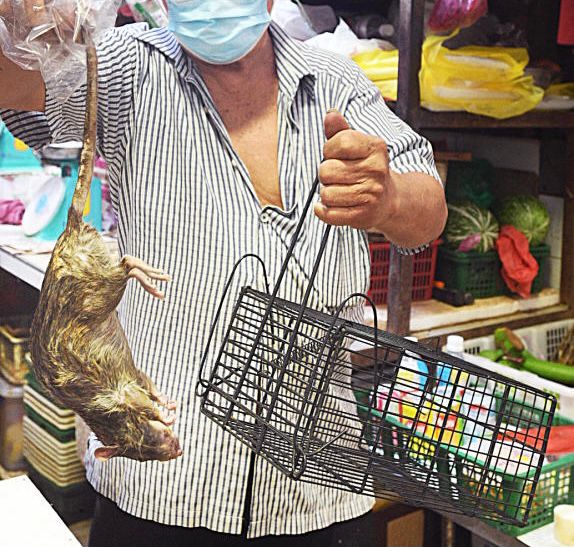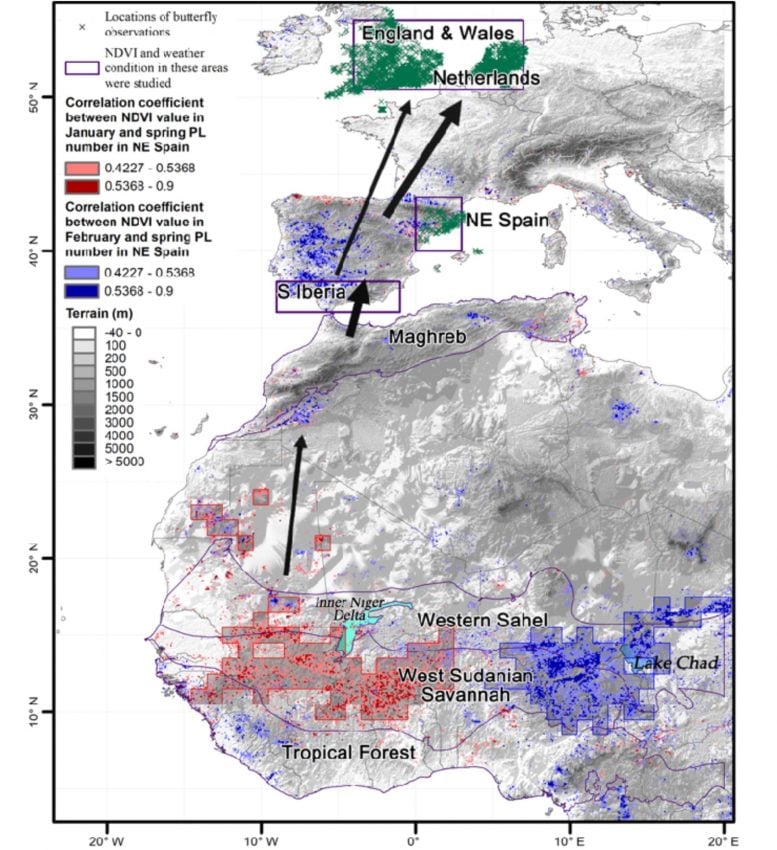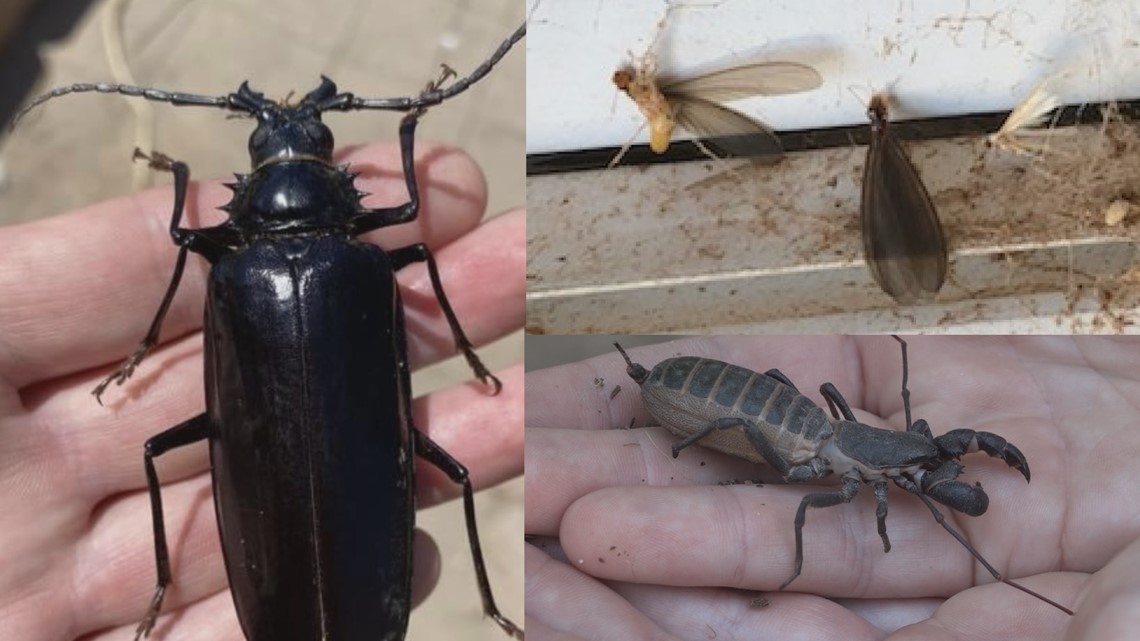Nikon Small World in Motion 2021 winning video shows the symbiotic relationship between termites and microscopic microfauna
MELVILLE, N.Y., Aug. 16, 2021 /PRNewswire/ — Nikon Instruments Inc. today unveiled the winners of the 11th annual Nikon Small World in Motion Photomicrography Competition. This year’s first place prize was awarded to Fabian J. Weston for his visually stunning video of live microfauna in the gut of a termite. These microorganisms found in termites play the essential role of digesting plant-based cellulose such as wood. Whilst contributing to termite nutrition, their most important role is in carbon cycling. Fabian hopes that his video will bring greater public awareness to the essential role all Protists play in every ecosystem on Earth.
Nikon Small World
Fabian captured this video using a research microscope from the 1970s, utilizing polarized light. He aimed to visually illustrate the symbiotic relationship between termites and these particular protists, to help audiences better understand the unseen role they play in our natural world. Fabian meticulously created an environment with a pH, chemical composition and temperature suited to keep the symbionts alive. These symbionts are difficult to film due to their sensitivity to light and oxygen, and any slight changes to their environment can cause both the insect and the protists in its gut to perish.
“The most challenging part of capturing this video was finding the right solution for the creatures themselves,” said Fabian. “I tried a lot of methods, even preparing my own saline solution. They’re very sensitive to oxygen, so I had to remove as much gas from the solution as possible. It was very tricky, and I had to work fast. The video you’re seeing is the result of months of trial and error, a lot of research and perseverance.”
Protists are a wide and highly diverse array of single-celled organisms, but those featured in the winning video have formed a relationship with termites to process the cellulose they eat and help them derive nutrition from it and cycle carbon back into the soil. “Protists, while largely unknown to the general public, are indeed the most abundant creatures on the planet,” said Fabian. “There is a significant gap in our understanding about these termite symbionts and how this unique evolutionary relationship developed with its host, making it well worth exploring and presenting.”
Story continues
Fabian added, “The beautiful thing is that easy access to modern imaging and the internet has allowed those with an interest in microscopy to share their discoveries globally, across all boundaries of culture, language and age. The world is so small, and we can connect easily with anyone across the globe.” Fabian hopes that his video will spark greater interest in Protists, as well as inspiring and encouraging more young peoples interested in STEM subjects.
“We’re living in an amazing time when we have the ability to capture and share high-quality scientific imagery,” said Eric Flem, Communications Manager, Nikon Instruments. “This year’s winning entry highlights the power that microscopy has to connect like-minded individuals, educate others using engaging visuals, and spread scientific knowledge to the general public”
Second place was awarded to Dr. Stephanie Hachey and Dr. Christopher Hughes for their time-lapsed fluorescence microscopy video of an engineered human micro-tumor forming and metastasizing. In order to capture this video, stromal cells and cancer cells were introduced into a microfluidic platform under dynamic flow conditions and placed into a customized CO2 and humidity-controlled chamber. The platform was imaged every 15 minutes for 10 consecutive days.
The 2021 judging panel included:
-
Dr. Nsikan Akpan, Health and Science Editor at New York Public Radio
-
Hank Green, Science Fiction Author and Internet Creator
-
Robin Kazmier, Science Editor at PBS NOVA
-
Dr. Alexa Mattheyses, Associate Professor of Cell, Developmental, and Integrative Biology at the University of Alabama, Birmingham
-
Dr. Hesper Rego, Assistant Professor of Microbial Pathogenesis at the Yale School of Medicine
For additional information, please visit www.nikonsmallworld.com, or follow the conversation on Facebook, Twitter @NikonSmallWorld and Instagram @NikonInstruments.
NIKON SMALL WORLD IN MOTION WINNERS
1st Place
Fabian J. Weston
Pennant Hills, New South Wales, Australia
Microfauna in a termite gut
Polarized Light
10X, 20X & 40X (Objective Lens Magnification)
2nd Place
Dr. Stephanie Hachey & Dr. Christopher Hughes
University of California, Irvine
Department of Molecular Biology and Biochemistry
Irvine, California, USA
10-day time-lapse of an engineered human micro-tumor forming and metastasizing. Vessels (red) support the growing tumor (blue).
Confocal, Fluorescence
10X (Objective Lens Magnification)
3rd Place
Andrei Savitsky
Cherkassy, Ukraine
Water flea (Daphnia pulex) giving birth to cubs
Darkfield
4X (Objective Lens Magnification)
4th Place
Dr. Alexandre Dumoulin
University of Zurich
Department of Molecular Life Sciences
Zurich, Switzerland
Commissural axons turning in an organized manner just after having crossed the midline of the central nervous system
Confocal
40X (Objective Lens Magnification)
5th Place
Dr. Sachie Kanatani & Dr. Photini Sinnis
Johns Hopkins Bloomberg School of Public Health
Department of Molecular Microbiology and Immunology
Baltimore, Maryland, USA
Infected mosquito salivating fluorescently-labeled malaria parasites
Confocal
10X (Objective Lens Magnification)
HONORABLE MENTIONS
Sophie-Marie Aicher & Dr. Delphine Planas
Institut Pasteur Paris
Department of Virology
Paris, Île-de-France, France
SARS-CoV-2 infection triggering cell fusion and cell death (red) in bat (Myotis myotis) brain cells
Fluorescence, Phase Contrast
20X (Objective Lens Magnification)
Richard Albrecht
Altenstadt, Bavaria, Germany
Mosquito (Culex pipiens) laying eggs
Reflected Light, Stereomicroscopy
5X – 20X (Objective Lens Magnification)
Bernard Allard & Didier Barbet
Club Français de Microscopie
Sucy-en-Bry, France
Hydra and Trichodina parasites
Brightfield
4X – 20X (Objective Lens Magnification)
Giulia L. M. Boezio & Dr. Radhan Ramadass
Max Planck Institute for Heart and Lung Research
Department of Developmental Genetics
Bad Nauheim, Hessen, Germany
3-day old zebrafish (Danio rerio) showing the beating heart, aorta, and connecting vessels (endothelial cells: white; blood cells: red)
Confocal
40X (Objective Lens Magnification)
Dr. Dylan T. Burnette
Vanderbilt University School of Medicine
Department of Cell and Developmental Biology
Nashville, Tennessee, USA
Epithelial cells in culture
Differential Interference Contrast (DIC)
60X (Objective Lens Magnification)
Dr. Dylan T. Burnette
Vanderbilt University School of Medicine
Department of Cell and Developmental Biology
Nashville, Tennessee, USA
DNA during cell division and death
Confocal
60X (Objective Lens Magnification)
Dr. Nan-Shan Chang, Pei-Yi Chou, Yu-An Chen & Chen-Yu Lu
National Cheng Kung University
Department of Molecular Medicine
Tainan, Taiwan
Metastatic 231 breast cancer cells meet with L929 fibroblasts
Brightfield
10X (Objective Lens Magnification)
Yen Fook Chew
Woodend, Waimakiriri, New Zealand
A cladoceran (Chydorus sp.) moving on the cocoon of a caddisfly nymph prompting a reaction. The caddisfly spends its youth as an aquatic insect before leaving the water to become airborne.
Darkfield
4X (Objective Lens Magnification)
Yen Fook Chew
Woodend, Waimakiriri, New Zealand
Having ingested nine Chydrorus, this oligochaete worm (Chaetogaster sp.) is having difficulty with the tenth, expelling it twice. This worm feeds by powerful suction rather like a vacuum cleaner.
Darkfield, Polarized Light
4X (Objective Lens Magnification)
Momir Futo
Rudjer Boskovic Institute
Division of Molecular Biology / Laboratory of Evolutionary Genetics
Zagreb, Grad Zagreb, Croatia
5-day time-lapse of Bacillus subtilis biofilm growth and development
Stereomicroscopy
0.65X (Objective Lens Magnification)
Dr. Jasmin Imran Alsous, Jonathan Jackson & Dr. Adam Martin
Simons Foundation Flatiron Institute
Center for Computational Biology
Cambridge, Massachusetts, USA
Nurse cells (cyan) contract and shrink in response to myosin waves (red) as they transport their contents to the egg cell in a fruit fly egg chamber.
Confocal
40X (Objective Lens Magnification)
Dylan Jones & Dr. Brian Atkinson
University of Nottingham
Department of Plant Science
Sutton Bonington, Leicestershire, United Kingdom
Laser ablation and reconstruction of pearl millet crown root
Laser Ablation Tomography
5X (Objective Lens Magnification)
Martin Kaae Kristiansen
My Microscopic World
Aalborg, Nordjylland, Denmark
Tardigrade showing individual muscle strands (muscles glow with different colors depending on the orientation to the light source)
Polarized Light
10X (Objective Lens Magnification)
Ana Gabriela Madrigal
McGill University
Institute of Parasitology
Ste-Anne-de-Bellevue, QC, Canada
Neutrophils (type of white blood cell) rolling through mouse blood vessel
Confocal
20X (Objective Lens Magnification)
Dr. Alvaro Migotto
Centro de Biologia Marinha
São Sebastião, São Paulo, Brazil
Sea cucumber
Darkfield
1.6X – 40X (Objective Lens Magnification)
Danielle Parsons & Alan deHaas
Wonder Science
Los Angeles, California, USA
Two liquid crystals crystallizing on the same microscope slide
Polarized Light
20X (Objective Lens Magnification)
Dr. Eric Peterman & Jeff Rasmussen
University of Washington
Department of Biology
Seattle, Washington, USA
Debris from degenerating axons (magenta) engulfed by an immune cell (cyan) in zebrafish (Danio rerio) skin
Confocal
25X (Objective Lens Magnification)
Wojtek Plonka
Krakow, Malopolskie, Poland
Ten day time-lapse of moss growth
Image Stacking
6X (Objective Lens Magnification)
Wojtek Plonka
Krakow, Malopolskie, Poland
10-day time-lapse of Lobelia pendula seed development
Image Stacking
6X (Objective Lens Magnification)
Martina Schaettin & Dr. Fabian F. Voigt
University of Zurich
Department of Molecular Life Sciences
Zurich, Switzerland
Fly-through of the nervous system of a 7-day old chicken embryo
Light Sheet
0.8X – 4X (Objective Lens Magnification)
Dr. Shinji Shimode
Yokohama National University
Manazuru Marne Center (MMCER)
Manazuru-machi, Kanagawa, Japan
Pelagosphaera larva (planktonic larval stage) of sipunculid worms (peanut worms)
Stereomicroscopy
60X – 120X (Objective Lens Magnification)
Francesca Strano
Victoria University of Wellington
School of Biological Sciences
Wellington, New Zealand
Sea slugs
Stereomicroscopy
6X (Objective Lens Magnification)
Maria F. Ullo & Jeremy S. Logue
Albany Medical College
Department of Regenerative and Cancer Cell Biology
Albany, New York, USA
Fluorescently tagged actin filaments flowing within a blebbing human melanoma cell
Deconvolution, Fluorescence
60X (Objective Lens Magnification)
Gaurav Upadhyay, Vedant Kumar & Dr. Rajneesh Bhardwaj
IIT Bombay
Department of Mechanical Engineering
Mumbai, Maharashtra, India
Water droplet bouncing over a superhydrophobic cantilever beam
Brightfield
7X (Objective Lens Magnification)
Wim van Egmond
Micropolitan Museum
Berkel en Rodenrijs, Zuid Holland, Netherlands
Mudflat diatoms
Brightfield, Darkfield, Differential Interference Contrast (DIC), Reflected Light
5X, 16X, 25X (Objective Lens Magnification)
Thomas A. Zangle & Soorya Pradeep
University of Utah
Department of Chemical Engineering
Salt Lake City, Utah, USA
5-day time-lapse of rat hippocampal neurons showing development of networks and interconnections. Contrast enhanced to highlight neurites.
Quantitative Phase Microscopy
20X (Objective Lens Magnification)
About Nikon Small World Photomicrography Competition
The Nikon Small World Photomicrography Competition is open to anyone with an interest in photography or video. Participants may upload digital images and videos directly at www.nikonsmallworld.com. For additional information, contact Nikon Small World, Nikon Instruments Inc., 1300 Walt Whitman Road, Melville, NY 11747, USA, or phone (631) 547-8569. Entry forms for Nikon’s 2021 Small World and Small World in Motion Competitions are available at https://enter.nikonsmallworld.com/
About Nikon Instruments Inc.
Nikon Instruments Inc. is the US microscopy arm of Nikon Healthcare, a world leader in the development and manufacture of optical and digital imaging technology for biomedical applications. For more information, visit https://www.microscope.healthcare.nikon.com/ or contact us at 1-800-52-NIKON.
(PRNewsfoto/Nikon Instruments Inc.)
Cision
View original content to download multimedia:https://www.prnewswire.com/news-releases/a-look-inside-a-termites-gut-wins-the-11th-annual-nikon-small-world-in-motion-competition-301355214.html
SOURCE Nikon Instruments Inc.








